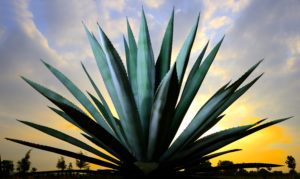Search results
4 results found.
4 results found.
(The earlier posting on the Columbian Exchange generated a great deal of comment and emails and I invited Mr. Desmond Nazareth of Agave India Industries Pvt. Ltd to share some further thoughts on the subject. So, here is a guest blog posting from him. In this article Desmond introduces a wide array of local alcohol products from around the world, some of which were new to me.)
The Columbian Exchange between the so-called ‘Old’ World (mainly Eurasia) and ‘New’ World (the Americas) was more than an ‘event’ – it was a ‘process’ that started in the 16th century and continues in a more generic sense even today.
In this guest blog, I would like to discuss the impact of this Exchange process on international alcoholic beverages and, make some suggestions for ‘opening up’ alcobev categories.
 Contemporary scholarship tells us that up to the 12th century AD or so, most cultures around the world consumed various forms of naturally fermented beverage. These were typically what we today call ‘wines’ (fermented grapes, fruit and berry juices), ‘beers’ (assorted cooked and fermented grains), and fermented natural sweet liquids (fermented palm sap, agave sap, nectar from flowers, honey).
Contemporary scholarship tells us that up to the 12th century AD or so, most cultures around the world consumed various forms of naturally fermented beverage. These were typically what we today call ‘wines’ (fermented grapes, fruit and berry juices), ‘beers’ (assorted cooked and fermented grains), and fermented natural sweet liquids (fermented palm sap, agave sap, nectar from flowers, honey).
In the Old World, using various fermented beverages as their substrates, distilled (and infused) potable alcohol began around the 12th century AD, giving rise to the plethora of ‘spirits’ and ‘liqueurs’ of today – the technique used initially was ‘pot-still’ distillation and later included ‘column’ distillation.
The New World knew nothing of distillation techniques until the 16th century AD, when it was introduced there by Old World colonizers.
With distillation being part of the technology that featured in the Exchange, it was applied to the variety of fermented beverages in the New World, including those made from ‘dramatis botanae’ that were local, and others that came with the Exchange.
Among the botanical species introduced to the New World, sugarcane (and the by-product, molasses) was by far the most important – the basis for light and heavy rums. Grapes, of course, became the basis of countless ‘local’ New World wines and spirits.
Species introduced to the Old World included cashew, potatoes, sweet potatoes, cassava, agave and corn – cooked and fermented, either alone or in combination with other local substrates (and sometimes a substitute ingredient), these became the basis of so-called ‘local’ distilled spirits.

In today’s world, various regions and countries lay claim to a ‘privileged’ status for a variety of alcoholic beverages, with the recent introduction of ‘international trademarks’ in the form of Geographical Indications (GIs) and Appellations of Origin(AOs), which are protected by the WTO and affiliates. Examples of these abound: Scotland’s ‘Scotch’, USA’s ‘Bourbon’ , Mexico’s ‘Tequila’, Brazil’s ‘Cachaça’, Goa’s ‘Feni’, etc.
Consider some ‘local’ alcobev that resulted directly from the Columbian Exchange:
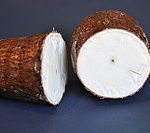
Now, in none of these countries or regions can one say that they produce only the product whose ‘localness’ they are trying to protect – in general, a variety of alcoholic beverages ‘originating’ from all over the globe are made ‘locally’ in most other parts of the globe.
In an increasingly connected, globalized world, does this sort of ‘protectionism’ make sense?
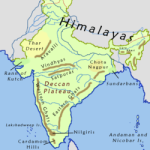
A case in point is the artisanal, small batch agave spirit that Agave India officially makes in India (since 2010), from blue-green agave that has been growing ‘locally’ on the Deccan Plateau for at least one hundred years. We would like our agave spirits to compete internationally with agave spirits made in Mexico – but the international competitions recognize only ‘Tequila’ or ‘Mezcal’ and do not allow us to compete within those ‘protected name’ categories. We’ve tried to make an argument for a larger category, ‘Agave Spirits’, in which ‘Indian agave spirits’ can go up against ‘Mexican agave spirits’, but so far to no avail.
We also make an artisanal, small batch sugarcane spirit in India, that we call ‘Pure Cane’ – but we cannot compete with ‘Cachaças’ in their category for the same reasons – should we not have an international category of ‘Sugarcane (or Cane) spirits’? It would make the many international producers of fine cane spirits happy to be recognized.
Perhaps, one day, globalization will remove meaningless barriers and productive exchanges of all kinds will take hold – some of which have very ancient geological and human histories.
(Acknowledgements: to the amazing, globalized and free resource that we know and love: ‘Wikipedia’)
Thank you, Desmond.

The US has Bourbon, Mexico has Tequila and Mezcal, Scotland has Scotch, Brazil has Cachaça, and the list goes on and on. But what about India? It’s among the top five alcohol consuming countries in the world and there is a robust spirits/whisky manufacturing industry. Colonial India invented the gin and tonic, but has had no serious candidate for national liquor, until now.
This is the story of the emergence of a national drink, led by one man’s innovativeness and tenacity. An alcohol product with a long history and exclusively Indian heritage, surrounded by legends, and spanning centuries. A historic product from the many tribes in the Central Indian Forest belt.
The products (there are two) are called DJ Mahua and DJ Mahua Liqueur. The man is Desmond Nazareth and we have met him before in this blog. (You will find them here, here, and here.)
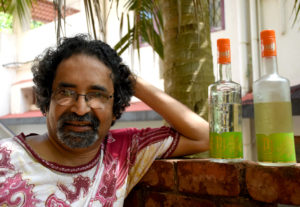
Mahua (pr. Ma-hu-a) is a flower that Indian tribes have been fermenting, distilling, and drinking. The Mahua tree has been considered sacred for centuries. Desmond and his Agave India Company have begun marketing the product under the DJ (DesmondJi) brand in liquor and liqueur formats and selling these products as Indian Made Liquor (IML) since June of this year. But his real challenge is to get the widespread liquor authorities to recognize Mahua as an official, potentially national drink.
Here’s how he describes Mahua:
“Mahua is a nectar rich flower of the Madhuca longifolia tree, which grows in the Central Indian Forest belt, historically inhabited by indigenous people of India, so called ‘Adivasis’, or ‘Tribals’. The nectar rich flowers mature and drop for a month or so in the Mar-April-May timeframe. These edible sundried flowers retain a significant part of their sugars, with a pleasant, complex taste akin to a hybrid of sun-dried raisin, fig and date… For centuries, Central Indian tribes have been collecting and storing Mahua flowers, and consuming single distilled Mahua spirit made from the flowers in traditional clay, wood-fired potstills.”
He depicts the products as “forest-to-bottle” and both are 40% Alcohol by Volume (AbV). The DJ Mahua liqueur is blended with honey and spices and there are plans for a DJ sparkling product. I’ve tried both the liquor and liqueur and found them to be very enjoyable products, with unique and pleasant tastes. The DJ Mahua Liqueur product in particular, was most enjoyable both straight and in cocktails.
Desmond describes Mahua as “the only spirit in the world that is fermented and distilled from naturally sweet flowers.” ‘What about St Germain?” I asked. According to Desmond, St Germain is made by macerating and steeping Elder Flower in alcohol; DJ Mahua is naturally fermented and distilled directly.
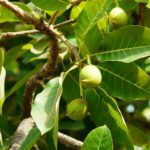
What fascinates me about Mahua is its colorful history. Spend a few minutes here and you’ll see what I mean.
As legend has it, Mahua is “An indigenous drink rumored to be the elixir of the Gods and the weakness of deities, the tribals tell tales of how it is coveted by deer, birds, and humans alike.”
According to Desmond, Mahua is more than a drink, it’s a reflection of India’s colorful tribal history. The legends and stories abound with tales of hard-working villagers saved from the messengers of death by Mahua; of animals cavorting while tipsy on the flowers. Desmond writes:
“From bark to fruit, leaf to root, every part of the Madhuca Longifolia (botanical name) earmarks our heritage in a way few other elements of our long cultural history do.”
A well-respected English anthropologist working with tribes in Central India named Felix Padel, a descendent of Charles Darwin, tasted Mahua and was surprised that the government did not develop it as an industry. He is quoted as saying, “I wonder why people in India would prefer French wine and English scotch when something fresh and rejuvenating like Mahua is available.”
And that leads us to Desmond Nazareth’s journey to make Mahua the Indian national drink.
Mahua is currently made in over a third of India’s 29 states and getting Mahua recognized all over India is a daunting task, particularly when you’re a niche, craft distiller with limited resources.
The Indian alcohol market is very complex and, to me at least, somewhat confusing. As I mentioned, its alcohol volume consumption is among the highest in the world but its per capita consumption is low. There is a love-hate relationship with alcohol, dating back to Gandhi’s aversion to it and at least four states and one territory practice prohibition. Yet, Indians love to drink and the worldwide cocktail enthusiasm is alive and well in the major cities.
Indian Made Liquor (IML) consists of two types. One is Indian Made Foreign Liquor (IMFL) and is the official term used by governments, businesses and media in India to refer to all types of liquor manufactured in the country other than indigenous alcoholic beverages. The other type is Country products such as Feni and Mahua.
Desmond is trying to get a new Excise category established countrywide. It would be known as Heritage alcohol products and strictly governed by international standards. It would be taxed lower than ‘IMFL/IML’ and higher than ‘Country’. He feels that this would encourage entrepreneurs to explore and exploit the huge treasure trove of Indian alcoholic beverages.
To get Mahua recognized as a national drink means a state by state campaign since there is no central national regulatory body equivalent to the USA’s TTB. “It is a crying shame that there currently is no simple Excise/ Revenue/ Customs mechanism for proudly made in India alcoholic beverages to be placed in Travel Retail (Duty Free) outlets in India,” says Desmond.
Nevertheless, an important step forward has emerged, thanks to Desmond’s efforts so far. The Food Safety and Standards Authority of India (FSSAI) is roughly equivalent to the USA’s FDA and is working to standardized the manufacture of Mahua and the use of its ingredients.
As you read this, know that Desmond is hard at work on a number of levels. The manufacture and sale of DJ Mahua and DJ Mahua Liqueur in his home state of Goa and elsewhere in India; working on a sparkling Mahua product; and pushing for recognition as a national drink.
My own view of this situation is that it represents a unique and powerful opportunity for a global player to enter the fray. The “size of prize” of the Indian market and overcoming the obstacles for global brands, suggests that the Diageos, Pernods, and others might want to take a close look at Mahua. I think it represents a real opportunity to participate in the development of a new national brand with Indian and global potential. (If I were still at Seagram, I’d be doing just that.)
For a brand to succeed on the global stage, it needs to be good tasting, backed by an entrepreneurial effort, and a have compelling story. DJ Mahua and its variants has all that and more.
It’s time for the product to come out of the woods and reflect its heritage the same way as bourbon, scotch, tequila, and all the other national drinks. I hope that the Indian authorities would grant a type of AOC (protected designation of origin) or Geographic Indication (GI) for Mahua along the same lines as those for cognac, tequila, champagne, and others.
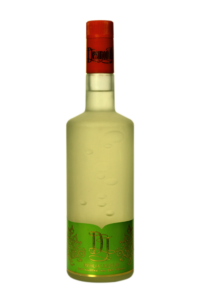
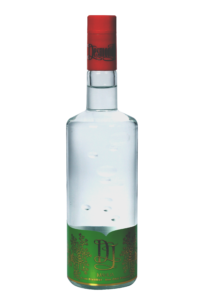
Back in 2014, I wrote a number of articles about Desmond Nazareth and his Agave India products, as well as how agave made its way to India. (See articles here and here.) Recently, I learned that Desmond has joined forces with Martin Grassl, the founder of Porfidio tequila.
Here is how their joint venture is described on Old Town Liquor’s website.
The joint venture was created out of the mutual respect of two entrepreneurs of disparate backgrounds but with similar creative minds. They shared a profound admiration for a botanical wonder, the “tree of marvels” as the Spanish Conquistadors called the agave when they encountered it in Mexico.
The product is called SINGLE AGAVE® 100% AGAVE AMERICANA EDITION (Code Name: S3xA). It’s not made in Mexico but in southern India— the Deccan Plateau, a geographical area where the agaves grow. As the story goes… the agave was transplanted from Mexico to India by Queen Victoria for fencing off the railways of the Raj to stop Holy Cows from being crushed by trains. The Agave Americana is the producer’s way of celebrating that 100-year-old event by distilling the wild plants.
I spoke with Desmond Nazareth or DesmondJi, as his brand is called, and here are excerpts from the interview.
BB: How did your relationship with Martin Grassl and Porfidio come about? How did you and he meet?
DN: The relationship was born out of respect for each other’s achievements and each other’s product quality. Martin noticed articles about Indian agave spirits appearing around 2012 in the Mexican press and contacted me.
It was both Martin’s and my opinion that agave spirits— be it tequila, mezcal or other— are unique precisely because of the botanical uniqueness of the agave plant (“the inulin factor”), the true and only star of the equation, not because they are Mexican-made.
The idea, of course, is not new, as it simply mimics what Baron Rothschild did for the world of wines 50 years ago by creating the first non-French wines in Chile and Napa. It was revolutionary idea at the time.
Both Martin and I strongly feel that Indian agave spirits, made in our craft distillery (India’s first), should be viewed in the same league as Mexican agave spirits like mezcal, by nature of being made from naturally grown and foraged agave plants, as opposed to plantation-grown agave plants. The fact that my products are made from 100% Agave Americana, rather than 100% Blue Agave, takes our premium products intentionally beyond tequila, along the lines of Mexico’s finest mezcals.
BB: This is a special edition product, how is it different from your other Agave brands?
DN: It differs in terms of product formulation from our other agave spirits products. Certain adjustments were made to the hydrolysis, fermentation and distillation process to create a product which is more attuned towards international taste profile preferences, rather than India’s domestic preferences. For this first special edition, a traditional process of heat hydrolysis has been used, the oven cooking method.
BB: Can you discuss the nature of the business relationship between the two companies?
DN: Single-Agave 100% Agave Americana is a joint venture product between DesmondJi and Porfidio. It forms part of Martin Grassl’s brainchild “world series” of non-Mexican made agave spirits, such as agave spirits made from Agave Cocuy (Venezuela), Agave Australis (Australia) and Agave Karoo (Africa). Agave spirits can be made wherever agave is grown, same as high quality wine can be made wherever appropriate grapes are grown. France certainly never liked the idea of the coming into existence of wines from Napa Valley, Barossa Valley and Mendoza, I guess it could not be helped, as it is the natural progression of things.
Agave India is essentially the ‘field-to-bottle’ producer of Indian craft spirits and Porfidio is a premium global co-branding and marketing partner We jointly decide what is an appropriate craft offering for the global market.
BB: Where do you see this joint venture going in the future?
The idea is to expand quickly into super-premium barrel aged expressions Indian Agave spirits, similar to Mexican Reposados and Añejos. Ours is a step-by-step approach, with the Blanco-style expression simply a starting point.
BB: Tell us more about the story behind the idea— “the agave was transplanted from Mexico to India by Queen Victoria for fencing off the railways of the Raj to stop Holy Cows from being crushed by trains.”
DN: There are two happenstances which brought about the existence of Indian agave spirits. For one, the general nature of the so-called Colombian Exchange, by which the agave, among many other plants and animals, “went international.” In addition, the Agave Americana arrived in India as a cost-effective means of fencing off the British rails to protect its trains from killing or maiming animals.
While the British probably single-mindedly aimed at protecting their financial assets— their trains—the concept of this fencing idea was equally a culturally-sensitive decision by the British Crown in protecting India’s free-roaming Holy Cows, one of our spiritual and cultural assets.
So, the “agave solution” was embraced by the colonizers and the colonized, as benefiting both. Neither “them” nor “us” grasped the true dimension of this pivotal fencing decision as the Mesoamerica-sourced Agave Americana proliferated beyond anyone’s wildest expectations on Southern India’s fertile soils, the Deccan Plateau Highlands. Why the Empire chose the Agave Americana towards such purpose—used in Mexico to produce some of the finest Mezcal—rather than any other variety, is a mystery still to be fully uncovered by botanical historians. Whatever the reason for the choice, it unquestionably benefited us.
BB: Other than in the US are there other countries where you’re working together?
DN: The US is the world’s biggest market for agave spirits. So, we thought it a good idea to do the initial special edition product launch in the US. Our next target market is Japan and China, based on Porfidio’s existing distribution platforms in these countries.
Thank you, Desmond.
